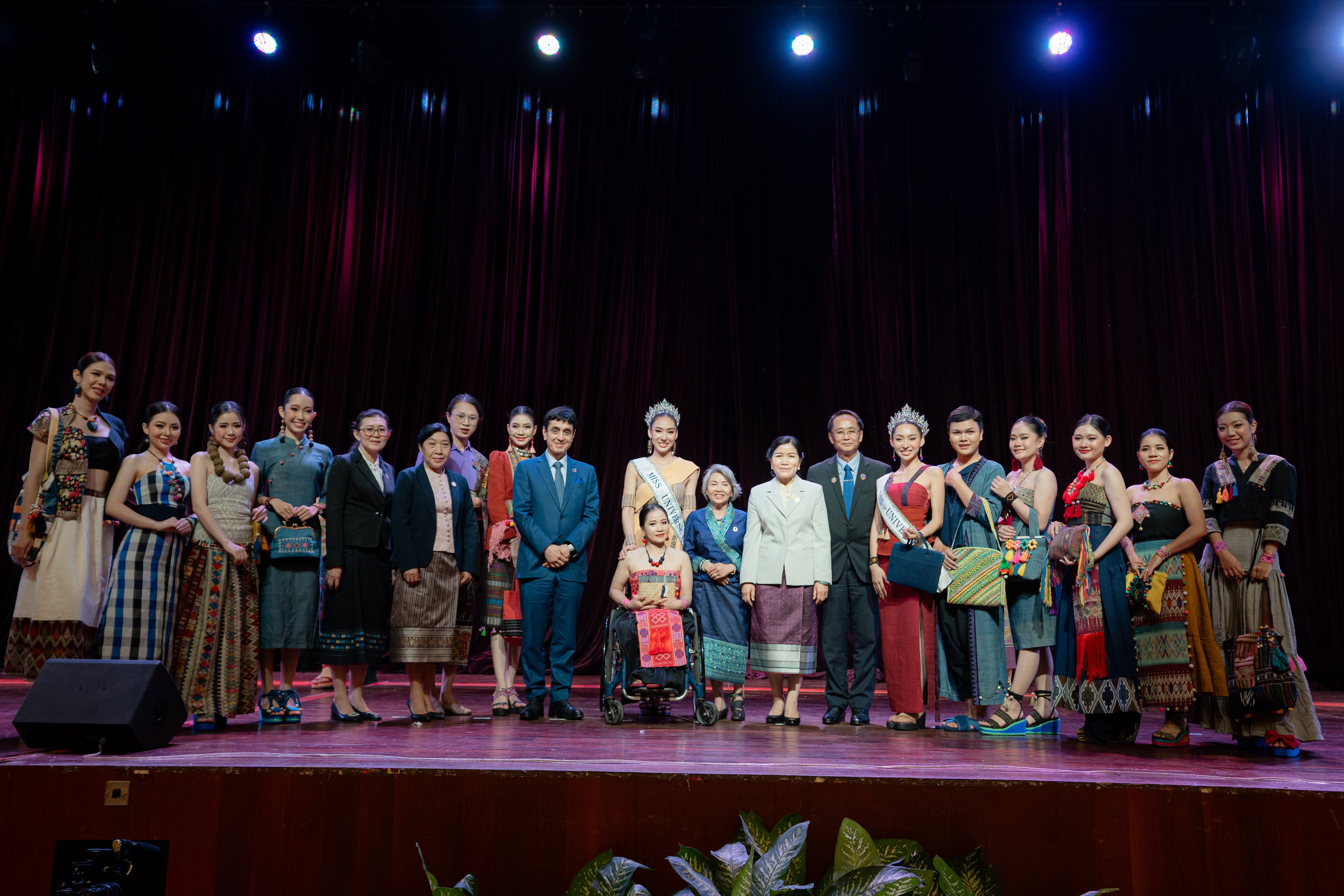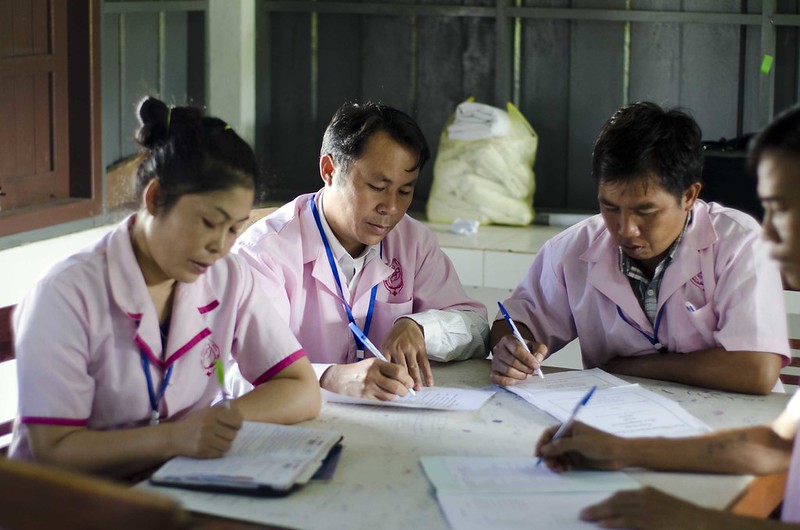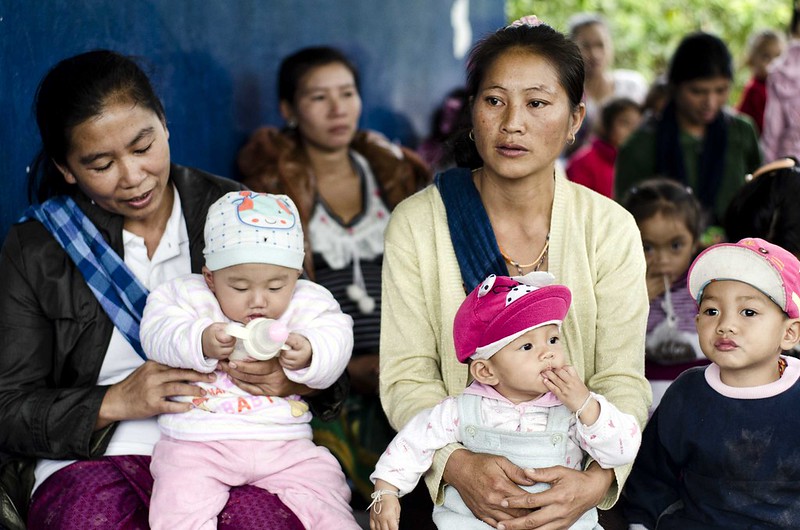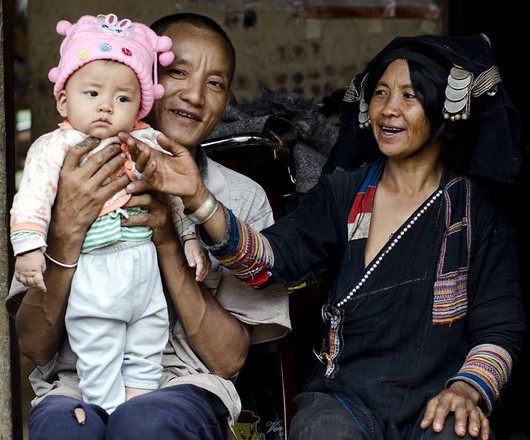Op-Ed by H.E Ms. Phonevanh Outhavong, Deputy Minister, Ministry of Planning and Investment and Dr Bakhtiyor Kadyorv, UNFPA Representative to Lao PDR
Weaving the promise: “Ending Inequalities in Sexual and Reproductive Health and Rights”
This year marks the celebration of the 30th anniversary of the International Conference on Population and Development. This celebration is about people; the vast tapestry of individuals that make up the globe and somewhat closer to home, the 7.6 million diverse individuals who make up this beautiful country.
Thirty years ago, at the International Conference on Population and Development (ICPD) governments around the world agreed that reproductive health and rights are the foundation stones of global development – paving the way for decades of progress in realizing rights and choices.
In 1994, Lao PDR was one such government that embraced this landmark Programme of Action at the ICPD in Cairo, followed by national population policies, strategies, laws and related action plans to empower women, men, girls and boys. National efforts have primarily focused on placing people at the heart of development.
In October 2023, His Excellency Deputy Prime Minister of Lao PDR delivered a powerful national statement at the first-ever high-level Conference on Population and Development (NCPD 2023). This reaffirmed Lao PDR's commitment to accelerating the implementation of the ICPD Programme of Action and the National Population and Development Policy through fourteen strategic recommendations.

Since the Cairo conference, which represented a significant shift away from population control policies and towards prioritizing the rights, choices and people's well-being, Lao PDR has made notable progress in advancing sexual and reproductive health, gender, rights, human capital and life expectancy.
For example, the maternal mortality ratio in Laos has seen a 78.7% drop from 2000 - 2020, making it one of the fastest declines globally. The contraceptive prevalence rate among married women of reproductive age (15-49 years) increased from 42% in 2012 to 54.1% in 2017.
Due to overall improvements in public health and hygiene, life expectancy at birth has increased from 55 years in 1994, the year of the ICPD endorsement, to nearly 68.5 years in 2020.
Over the past 5 years, concerted public awareness efforts, strong governmental leadership, and substantial investments in preventing violence against women, have led to a significant decrease in acceptance/tolerance towards domestic violence in Lao PDR.
The country has made significant progress in women's access to comprehensive sexual and reproductive health care, including family planning, maternal health care, adolescent-friendly services, and services to address gender-based violence.
Lao PDR is now in the middle stage of its demographic transition. A steady decline of fertility to 2.3 births per woman and increasing longevity have been a significant contributor to this demographic transition.
The population has grown from 6.7 million in 2015 to approximately 7.68 million in 2023 and is expected to reach 8.3 million by 2030—a gain of nearly one million people in seven years.
Lao PDR will continue population growth until 2069.
The working-age population is expected to constitute around 67 per cent of the total population by 2030 and peak at 69 per cent by 2050.
Nearly half of the current population is under the age of 25. To turn this ‘youth bulge’ into a demographic dividend, we need to invest in long-term human capital development, including education, employment and empowerment.
Thus, investing in young people is crucial for Laos’ economic growth and development.
In this respect, realizing the demographic dividend and the economic growth potential especially require advancing young people’s reproductive rights and equitable access to quality sexual and reproductive health care. This is to empower and expand opportunities and rights for young people.
Therefore, significant investments are essential to meet the rising demands for quality sexual and reproductive health services.
Research shows substantial returns on investment through rights-based family planning, reducing unintended pregnancies, enhancing educational attainment, boosting lifetime earnings for girls, and increasing women's workforce participation. For instance, during the mid to late 20th century demographic windows in Asia (e.g. Malaysia and Singapore), GDPs increased significantly, contributing to the so-called Asian economic miracle. These moments in Asia were accompanied by a substantial increase in female labor force participation.
According to an investment case and analysis conducted in Lao PDR, for every dollar invested in family planning, benefits to families and society are estimated to be around USD 33.

Despite significant achievements, geographic, urban-rural, socio-economic, age and gender inequalities and disparities remain as a serious impediment to progressing towards the ICPD goals and SDGs. Therefore, it is the time for us to shift from a focus on furthest-behind groups to furthest-behind factors that create these inequalities and disparities.
Imagine a young girl who is visually impaired, out-of-school and facing early pregnancy. She is living in a difficult to reach village in a remote area with limited access to health, sexual and reproductive health services and information as well as limited access to education. Her challenges are profound—healthcare providers may struggle to meet her needs, and family and community resources may fall short in supporting her potential. It is precisely for her and others like her that we must harness the power of data, informed strategies, and actionable policies. That young girl should be the bedrock of our strategies, our initiatives for better, timelier, and transparent data, and our commitment to better governance and policies.
Data from LSIS III shows us that:
Adolescent pregnancy remains very high compared to the countries in the region. Education plays a pivotal role here; girls with no education experience childbearing rates over eight times higher than those with higher levels of education.
- 1 in 3 women aged 20-24 were married before turning 18.
- Only around 18% take autonomous decisions regarding contraceptive use, and only 45% can make their own decisions regarding healthcare (SDG target 5.6.1).
- We also need to be aware of the disparities and barriers facing the LGBTQIA+ community, including access to sexual and reproductive information and care.
We need to generate data disaggregated by critical factors such as culture, ethnicity, language, disability status, migration status, sexual orientation, and gender identity to leave no one behind.
Using evidence to better understand and alleviate disparities should be a top priority for us in the coming years.

As UNFPA Executive Director Dr. Natalia Kanem emphasizes, "People may be hard to reach, but no one is unreachable”.
Our greatest asset in reaching vulnerable communities through culturally appropriate and equitable sexual and reproductive health care is the midwifery workforce.
Midwives play a pivotal role by leveraging their expertise and local knowledge to ensure safe births and better health outcomes for mothers and babies. Investing in Laos' midwifery workforce is crucial for reaching ethnic minorities and ensuring equitable maternal health and reproductive care.
The Programme of Action of the International Conference on Population and Development calls for valid, reliable, timely, culturally relevant, internationally comparable data, including gender and ethnicity-specific information.
Disaggregated data by age, geography, and socio-economic status is critical for identifying who is left behind. In this regard, the upcoming Population and Housing Census is pivotal.
Furthermore, strengthening the data governance system will enable the country to empower its young generation and capitalize on the existing demographic window of opportunity.
As aptly put by Dr. Natalia Kanem, in her message for World Population Day, "For humanity to progress, people must be counted, wherever they are and whoever they are – in all their diversity."
Finally, in order to squarely address challenges, monitor and accelerate progress, we need a national coordination committee on population and development at a level that effectively steers and facilitates the work of sectors related to health, education, gender, data for development, employment and investments.
No one actor can single-handedly create meaningful change for women and girls on the ground; concerted efforts are needed to help them overcome their challenges and reach full potential.
The Government of Lao PDR and UNFPA believe that only through concerted efforts of the Government and development partners, private sector and civil society constituents, will we be able to unlock opportunities for women, men, boys and girls across the country.
As we move forward, let us remember that our efforts must focus on those who are most marginalized and vulnerable.
By doing so, we can build a future where every individual, regardless of their circumstances, could thrive.



